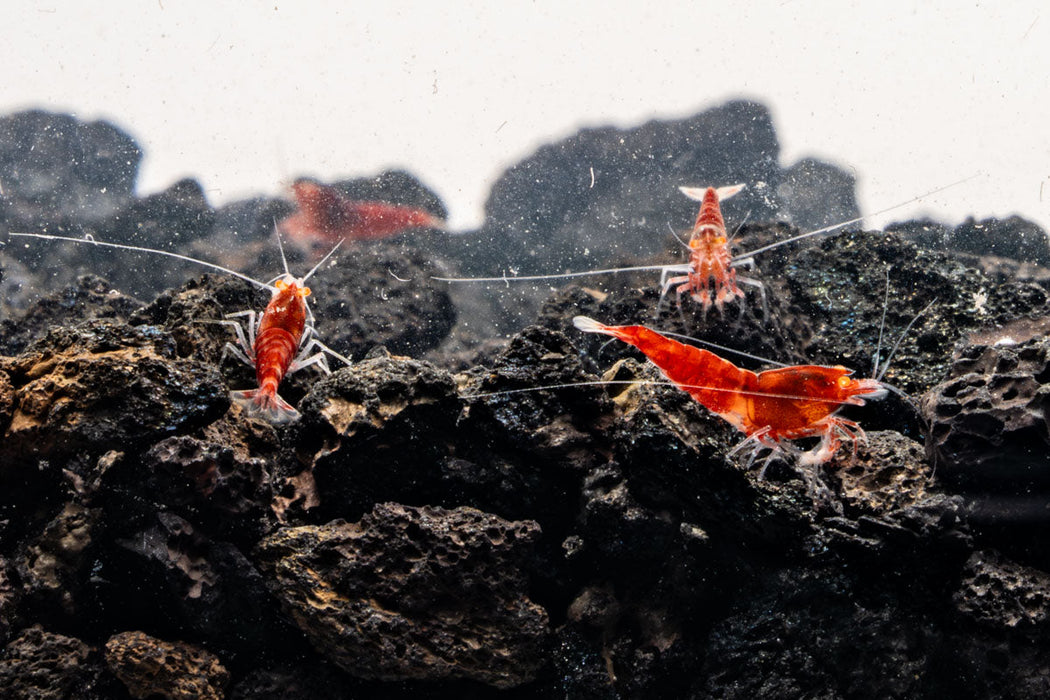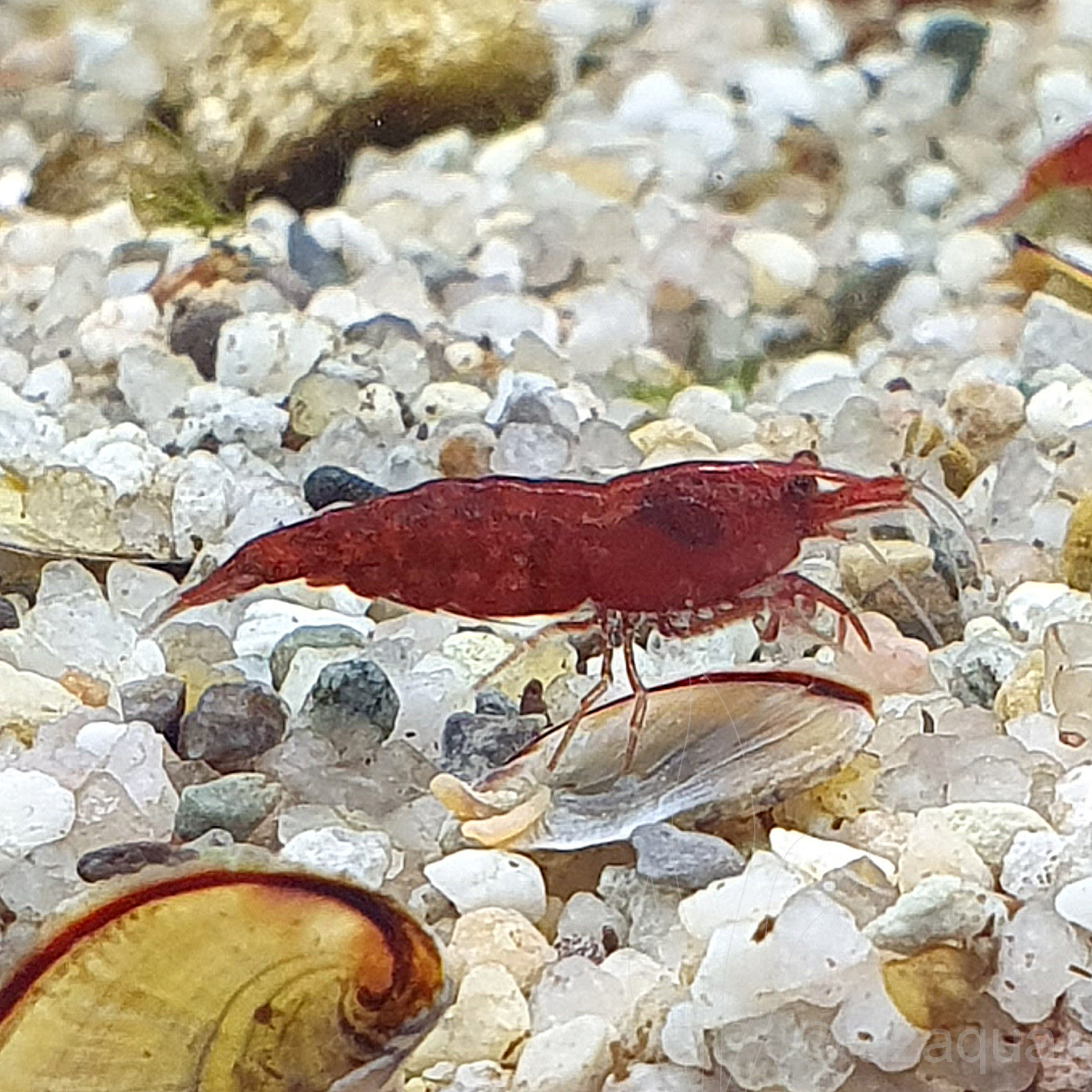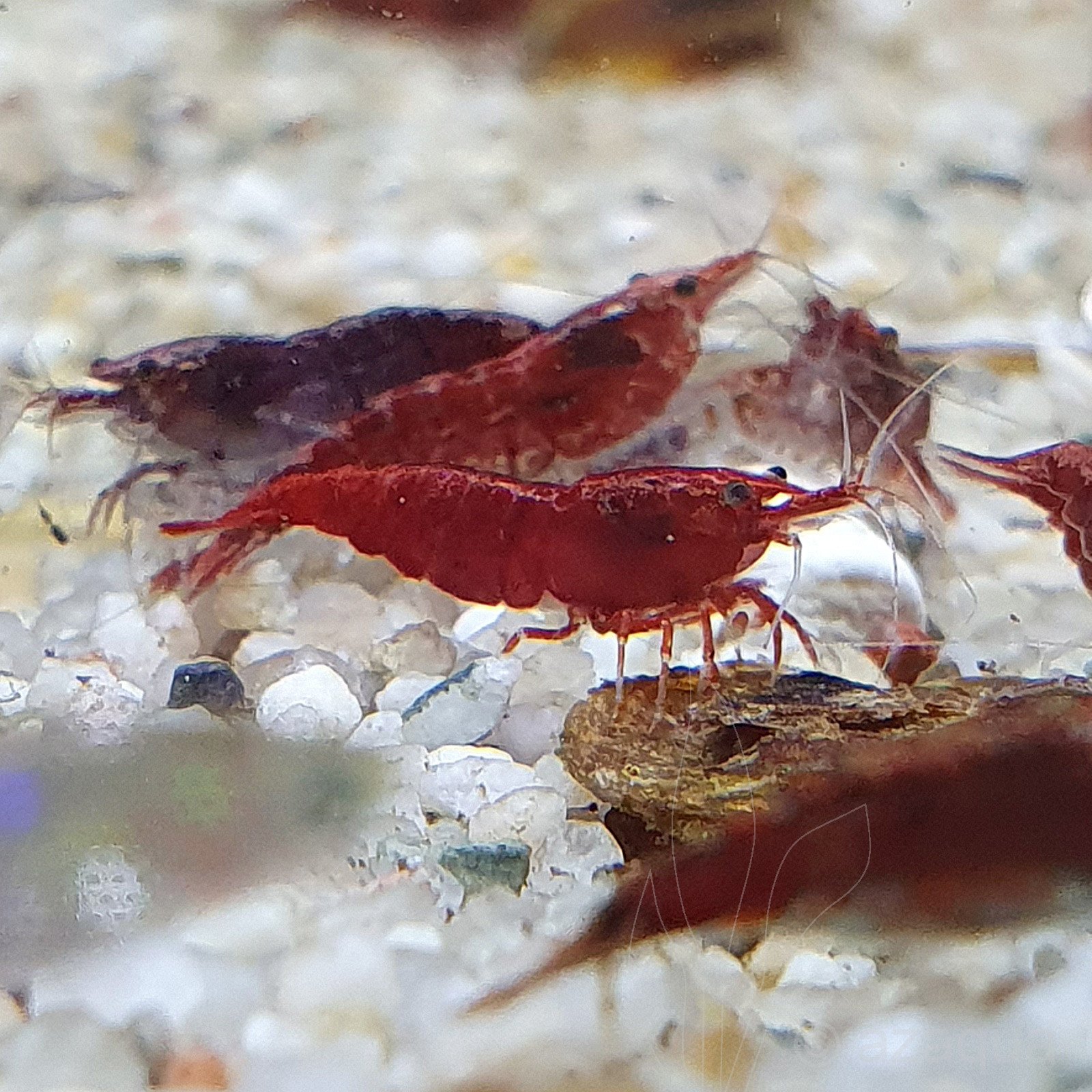Red Sakura King Shrimp can suffer from bacterial infections and poor water quality. They may also experience stress due to inadequate tank conditions.
Red Sakura King Shrimp are popular in aquariums for their vibrant color and active behavior. These shrimp require specific care to maintain their health and avoid common issues. Bacterial infections can arise from poor water quality or overfeeding. Stress is another significant concern, often caused by fluctuating water parameters or improper tank setup.
Maintaining a clean tank with stable water conditions is crucial for their well-being. Regular monitoring and quick action can prevent many health problems. Proper diet, clean water, and appropriate tank mates ensure that Red Sakura King Shrimp thrive and display their best colors.

Credit: www.amazon.com
Common Health Issues
Red Sakura King Shrimp are beautiful and vibrant creatures. They need proper care to stay healthy. Despite best efforts, they can face health problems. Knowing common health issues can help you tackle them early.
Bacterial Infections
Bacterial infections are a common issue for Red Sakura King Shrimp. These infections can cause various symptoms. Look for signs like discoloration, lethargy, and loss of appetite.
| Symptoms | Description |
|---|---|
| Discoloration | Color fades or changes to white. |
| Lethargy | Shrimp become less active and move slowly. |
| Loss of Appetite | Shrimp stop eating their food. |
If you notice these symptoms, act quickly. Isolate the affected shrimp in a separate tank. Use antibiotics designed for shrimp. Maintain water quality to prevent further infections.
Parasitic Infestations
Parasitic infestations also pose a threat to Red Sakura King Shrimp. Parasites can attach to the shrimp’s body. They cause stress and health issues.
Common signs of parasitic infestations include:
- Visible parasites on the shrimp’s body
- Erratic swimming behavior
- Scratching against objects in the tank
Treat parasitic infestations with specialized medications. Ensure you follow the instructions carefully. Regularly clean the tank and remove any potential parasite hosts.
Signs Of Poor Health
Red Sakura King Shrimp are popular in aquariums. They have unique color and beauty. But, they can face health issues. Knowing the signs of poor health is crucial. Early detection helps save them.
Discoloration
One major sign of poor health is discoloration. Healthy Red Sakura King Shrimp are bright red. If their color fades, it indicates stress or illness. Look for these color changes:
- Pale or whitish patches
- Dark spots or black marks
- Loss of overall red hue
These changes suggest the shrimp are unwell. Check their environment. Ensure water quality is optimal. Poor water conditions often cause discoloration.
Unusual Behavior
Observing their behavior gives clues about their health. Healthy shrimp are active and curious. They swim and explore their surroundings. Watch for these unusual behaviors:
| Behavior | Possible Issue |
|---|---|
| Staying still for long periods | Stress or illness |
| Erratic swimming | Water quality issues |
| Hiding constantly | Fear or discomfort |
If you notice these behaviors, act quickly. Test the water. Check for ammonia or nitrite spikes. Ensure the tank is clean and safe.
Keeping an eye on these signs of poor health ensures your shrimp stay healthy. Regular observation and maintenance are key. Happy shrimp are vibrant and active.
Preventive Measures
Keeping Red Sakura King Shrimp healthy is crucial for their well-being. This section covers preventive measures to avoid common health problems. Let’s dive into two essential aspects: Water Quality Maintenance and Diet and Nutrition.
Water Quality Maintenance
Water quality is vital for the health of Red Sakura King Shrimp. Poor water conditions can lead to stress and diseases. Regularly test water parameters to keep them within safe ranges.
- Temperature: Maintain water temperature between 72°F and 78°F.
- pH Level: Keep pH levels between 6.5 and 7.5.
- Ammonia and Nitrite: Ensure levels are at 0 ppm.
- Nitrate: Keep nitrate levels below 20 ppm.
Use a reliable water testing kit to monitor these parameters. Perform partial water changes weekly, replacing 10-20% of the tank water. This helps to remove toxins and maintain water quality.
Install a good filtration system to keep the water clean. Choose filters that do not create strong currents, as shrimp prefer calm waters. Add live plants to help absorb excess nutrients and provide hiding spots.
Diet And Nutrition
A balanced diet ensures the Red Sakura King Shrimp stay healthy and vibrant. Provide a variety of foods to meet their nutritional needs. Feed them high-quality shrimp pellets as the main diet.
Supplement their diet with blanched vegetables like spinach and zucchini. These provide essential vitamins and minerals. Offer protein-rich foods such as bloodworms and brine shrimp occasionally.
Avoid overfeeding to prevent water pollution. Feed them small amounts once or twice a day. Remove uneaten food after a few hours to maintain water quality.
Consider using a feeding dish to contain the food. This helps to prevent the spread of waste and maintain a clean tank environment.
Remember: A varied diet is key to strong immunity and vibrant colors in your Red Sakura King Shrimp.
Quarantine Practices
Red Sakura King Shrimp are beautiful and delicate creatures. They need special care to stay healthy. Quarantine practices are very important. These practices help prevent diseases and health problems. This section explains how to introduce new shrimp and isolate them properly.
New Shrimp Introduction
Introducing new shrimp to your tank can be exciting. But it can also be risky. New shrimp may carry diseases. These diseases can spread to your existing shrimp. Always quarantine new shrimp before adding them to your main tank.
Follow these steps:
- Get a separate quarantine tank.
- Fill it with clean, treated water.
- Acclimate the new shrimp to the quarantine tank slowly.
- Keep them in the quarantine tank for at least 2 weeks.
- Observe them for any signs of illness.
Isolation Techniques
Isolation is key to preventing disease spread. Use the right techniques to isolate shrimp effectively. Here are some tips:
- Use a small tank: A small tank is easier to manage.
- Provide hiding spots: Shrimp feel safer with places to hide.
- Monitor water quality: Check the water regularly.
- Feed appropriately: Do not overfeed the shrimp.
Keep a close eye on the isolated shrimp. Look for any unusual behavior or signs of sickness. If they show signs of illness, treat them before moving to the main tank.
Treatment Options
Red Sakura King Shrimp are beautiful creatures but can face health issues. Proper treatment options can help restore their health. This section explores effective solutions.
Medications
Medications can treat shrimp diseases effectively. Some common medications include:
- Anti-Fungal Treatments: These help combat fungal infections.
- Antibiotics: Useful for bacterial infections like Vorticella.
- Anti-Parasitic Treatments: These target parasitic infestations.
Always follow dosage instructions carefully to avoid harm. Incorrect dosage can be harmful. Monitor the shrimp during treatment for side effects.
Natural Remedies
Natural remedies are gentle and can be very effective. Some options include:
- Indian Almond Leaves: These have antibacterial properties. They also lower stress levels.
- Salt Baths: A mild salt solution can help cure infections.
- Garlic Extract: Garlic boosts immunity and fights parasites.
Natural remedies are safer but must be used correctly. Always research before using any new remedy.
Here is a quick comparison of medications and natural remedies:
| Treatment Type | Pros | Cons |
|---|---|---|
| Medications | Fast-acting, Effective | Risk of side effects, Requires correct dosage |
| Natural Remedies | Gentle, Safer | Slower results, Requires proper research |
Both options have their benefits. Choose based on the shrimp’s condition and needs.
Importance Of Regular Monitoring
The importance of regular monitoring cannot be overstated when keeping Red Sakura King Shrimp. Regular checks help ensure your shrimp remain healthy. Let’s explore the key aspects of regular monitoring.
Routine Health Checks
Routine health checks are crucial. They help catch problems early. Inspect your shrimp weekly for signs of illness. Look for discoloration, spots, and fungus. Check their exoskeleton for damage. Healthy shrimp should have a vibrant red color. They should also have smooth, unbroken shells.
| Health Indicator | Healthy Signs | Unhealthy Signs |
|---|---|---|
| Color | Bright Red | Faded or Pale |
| Exoskeleton | Smooth | Spots or Fungus |
| Movement | Active | Sluggish |
Behavioral Observations
Behavioral observations are equally important. Healthy shrimp are active and curious. They explore their environment and are often seen foraging. Unhealthy shrimp may hide more often. They might also become lethargic.
- Active shrimp swim often.
- Healthy shrimp forage frequently.
- Sick shrimp may hide frequently.
- Lethargic shrimp may move slowly.
Regular monitoring helps catch these signs early. This allows for prompt treatment. It ensures your Red Sakura King Shrimp thrive.
Creating A Healthy Habitat
Red Sakura King Shrimp are beautiful and delicate creatures. Ensuring their health requires a proper habitat. This means understanding their needs and creating an environment that supports their well-being.
Tank Setup
A proper tank setup is crucial for Red Sakura King Shrimp. Start by choosing a tank that is at least 10 gallons. This gives them enough space to swim and explore.
Maintain a temperature between 70-78°F. Shrimp are sensitive to temperature changes. Use a heater to keep the water stable.
Water quality is vital. Use a good filter to keep the water clean. Perform regular water changes to avoid harmful toxins.
Provide plenty of hiding spots. Add plants, rocks, and driftwood. This helps them feel safe and secure.
Suitable Tank Mates
Choosing the right tank mates is important. Red Sakura King Shrimp are peaceful and can be stressed by aggressive fish.
Here are some suitable tank mates:
- Neon Tetras
- Snails
- Small Rasboras
- Otocinclus Catfish
Avoid larger fish that may see shrimp as food. This includes Cichlids and Goldfish.
By creating a healthy habitat, you ensure your Red Sakura King Shrimp thrive. Happy shrimp are healthy shrimp!

Credit: buceplant.com
Handling Stress Factors
Handling stress factors is vital for maintaining the health of Red Sakura King Shrimp. Stress can lead to various health problems, impacting their growth and lifespan. This section will address the key aspects of managing stress, focusing on environmental stressors and proper handling.
Environmental Stressors
Environmental stressors play a significant role in the health of Red Sakura King Shrimp. The following are the key factors to monitor:
- Water Quality: Ensure optimal pH levels, temperature, and cleanliness.
- Ammonia Levels: High ammonia levels can be toxic. Regularly test the water.
- Oxygen Levels: Maintain adequate oxygenation to avoid respiratory stress.
- Lighting: Use appropriate lighting to mimic natural conditions.
To maintain ideal water conditions, consider using the following table:
| Parameter | Ideal Range |
|---|---|
| pH Level | 6.5 – 7.5 |
| Temperature | 68°F – 74°F (20°C – 23°C) |
| Ammonia | 0 ppm |
| Oxygen | 7 – 8 ppm |
Proper Handling
Proper handling of Red Sakura King Shrimp is crucial to minimize stress. Follow these guidelines:
- Gentle Netting: Use a soft net to avoid physical damage.
- Minimize Handling: Only handle shrimp when necessary.
- Acclimation: Gradually acclimate shrimp to new environments.
- Isolation: Isolate new shrimp before introducing them to the tank.
By addressing these stress factors, you can ensure a healthier environment for your Red Sakura King Shrimp. This will lead to better growth and a longer lifespan for your shrimp.

Credit: www.azaqua.nl
Frequently Asked Questions
How Do You Know If Your Shrimp Are Sick?
Sick shrimp show signs of lethargy, loss of appetite, discolored or cloudy shells, and unusual swimming behavior. Check for parasites.
What Is The Lifespan Of A Sakura Shrimp?
Sakura shrimp typically live for 1 to 2 years. Good water quality and diet can extend their lifespan.
Why Are My Red Cherry Shrimp Dying?
Red cherry shrimp may die due to poor water quality, incorrect temperature, or lack of proper diet. Ensure stable water conditions and avoid sudden changes.
What Is The Difference Between Cherry Shrimp And Sakura Red Shrimp?
Cherry shrimp are basic red shrimp. Sakura red shrimp are a higher grade with more intense red coloring.
Conclusion
Ensuring the health of your Red Sakura King Shrimp is crucial. Regular water checks and balanced diets can prevent many issues. Stay vigilant for signs of stress or disease. Prompt action can make a significant difference. Healthy shrimp will thrive, adding beauty and vibrancy to your aquarium.
Keep learning and observing for the best care.
